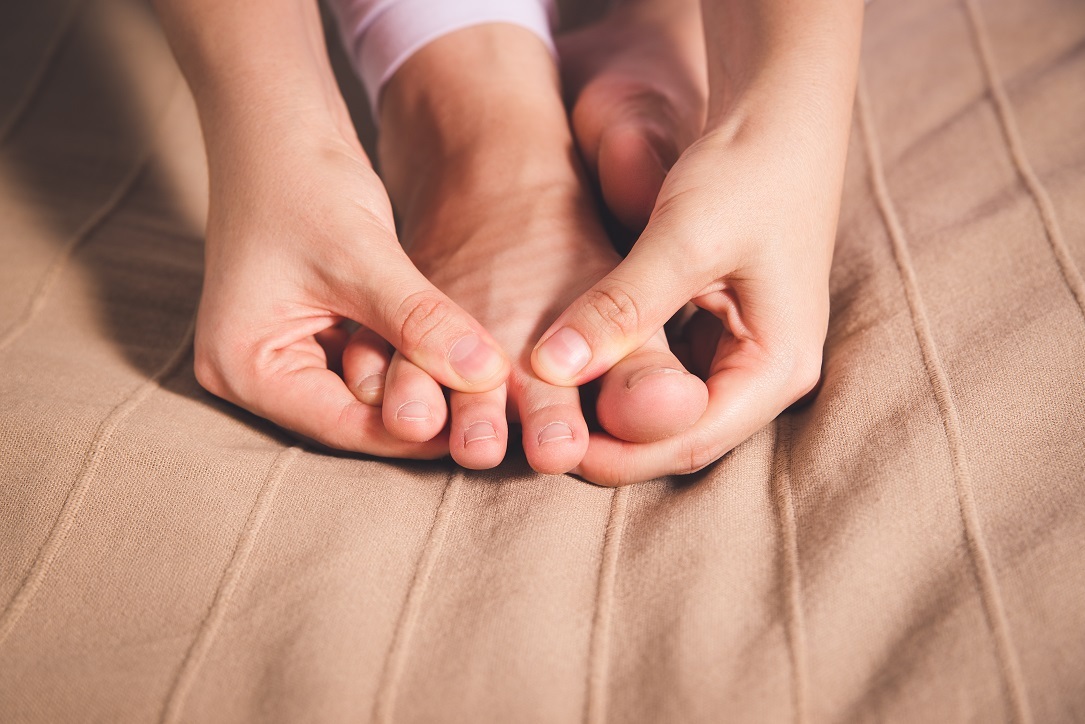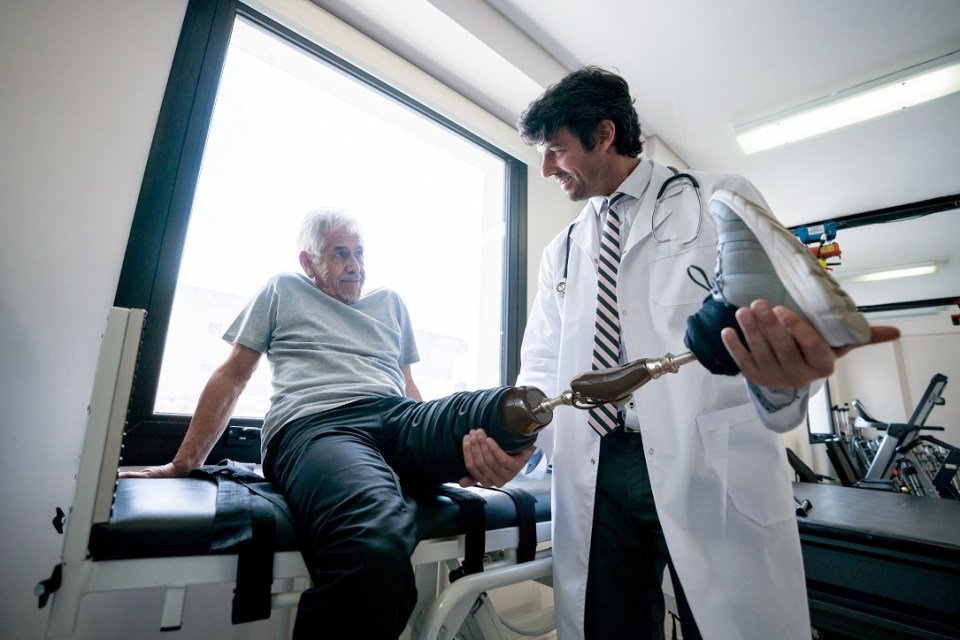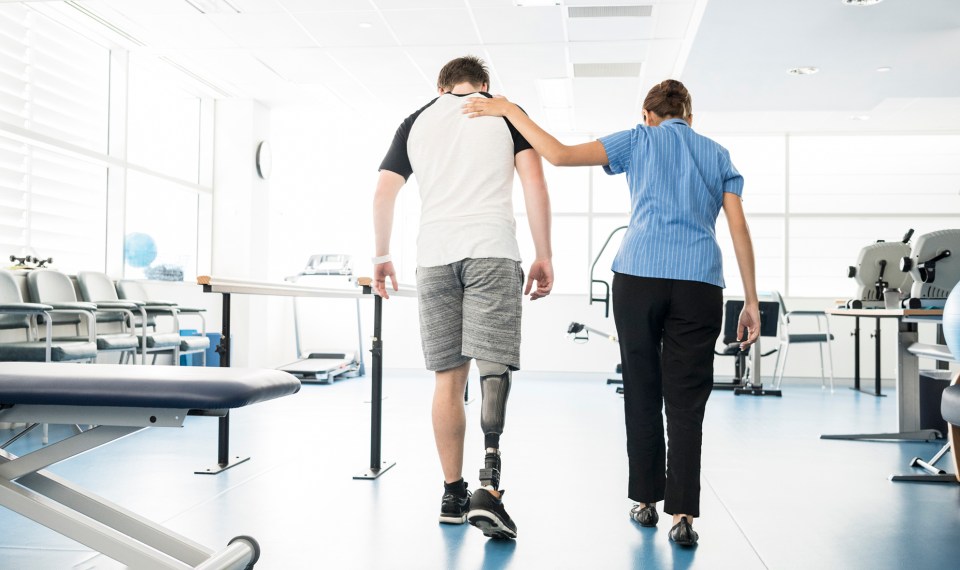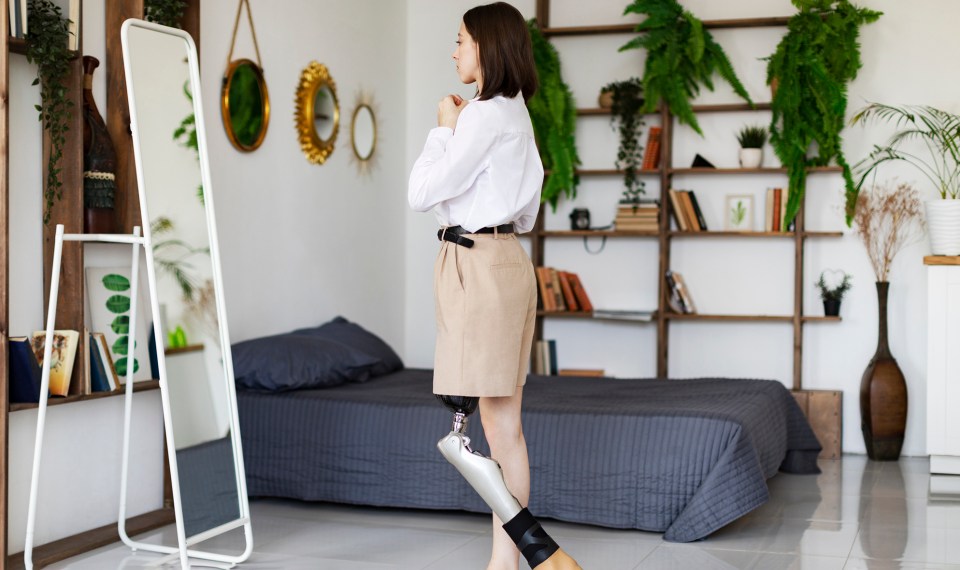Ron Holbrook, a physical therapist and amputee program manager at Encompass Health Rehabilitation Hospital of Concord, said many of his patients underwent amputation due to diabetes, specifically type 2 diabetes. According to the Diabetes Council, diabetes accounts for about 67% (73,000) of lower limb amputations not related to trauma in the United States each year, which underscores the importance of early prevention. “One of the most important ways to reduce your risk of type 2 diabetes and, therefore, amputations (or subsequent amputations) would be to develop healthy eating habits, a more active lifestyle and improved control of insulin management, Holbrook said.
Peripheral Arterial Disease (PAD)
Why is amputation due to diabetes prevalent? “A complication of diabetes is poor blood flow, which leads to peripheral arterial disease (PAD),” Holbrook explained. PAD can worsen quickly without proper treatments, causing ulcers on the lower extremities, and the condition compounds. “Poor blood flow results in poor healing of ulcers and infection which can then lead to amputations,” Holbrook said.
Symptoms of PAD to look for include weakness, cramping and pain while walking.
Diabetic Neuropathy
High blood sugar can also lead to neuropathy, meaning that nerves do not send accurate brain signals when something is painful or wrong with the feet. “Patients may start with a small ulcer or wound that they can’t feel; left untreated, the wound becomes severe enough that the body can no longer heal due to the poor blood flow. This is when amputations are likely to happen,” Holbrook said.
How Can I Reduce Risk of Amputations Due to Diabetes?
Properly caring for your feet is key to reducing your risk of amputation due to diabetes. You can do this by:
- Performing daily foot checks. Look for breaks in the skin, blisters and discolorations. It’s important to look in between your toes and check inside your shoes with your hands before putting them on. If you see a new wound or sore, contact your physician or podiatrist.
- Wearing clean dry socks. Socks protect feet from foreign objects. As an extra precaution, wear white socks. You’re more likely to notice blood if you do get a cut.
- Wearing and shaking out your shoes. Open-toed shoes don’t protect feet as well as close-toed shoes. With open-toed shoes, small debris can become lodged in the skin leading to damage. It’s also important to shake out your shoes daily to remove any small objects like pebbles.
- Visit your doctor or podiatrist. Get regular assessments of your feet from a healthcare professional.

Know the Signs
If you notice any of these symptoms during your foot checks, contact your doctor.
- Ingrown toenails
- Blisters
- Athlete’s food
- An open sore or bleeding
- Swelling and redness
- Warmth on your feet
- Discolored skin
- A foul odor
- An ulcer that persists for more than one week
- A sore that is slow to heal
What if I’ve Already Undergone a Diabetes Amputation?
People with an amputation are at a higher risk for subsequent amputations. “You can reduce your risk of further amputations with daily skin checks, continuing with routine healthcare and maintaining a good support system,” Holbrook said.
If you’ve already undergone amputation and your doctor has recommended a post-acute care setting for recovery, consider inpatient rehabilitation to enhance your recovery and improve quality of life. You’ll participate in therapy three hours per day, five days per week to achieve your personal goals. Inpatient rehabilitation can help you learn to properly care for your wound, adjust to life after limb loss, improve your mobility with a prosthesis and offer emotional support.
Simple Health, a Healthy Eating for Diabetics Guide
Use our free guide as a tool to help you manage your diabetes and reduce the risks of complications.
DownloadThe content of this site is for informational purposes only and should not be taken as professional medical advice. Always seek the advice of your physician or other qualified healthcare provider with any questions you may have regarding any medical conditions or treatments.



